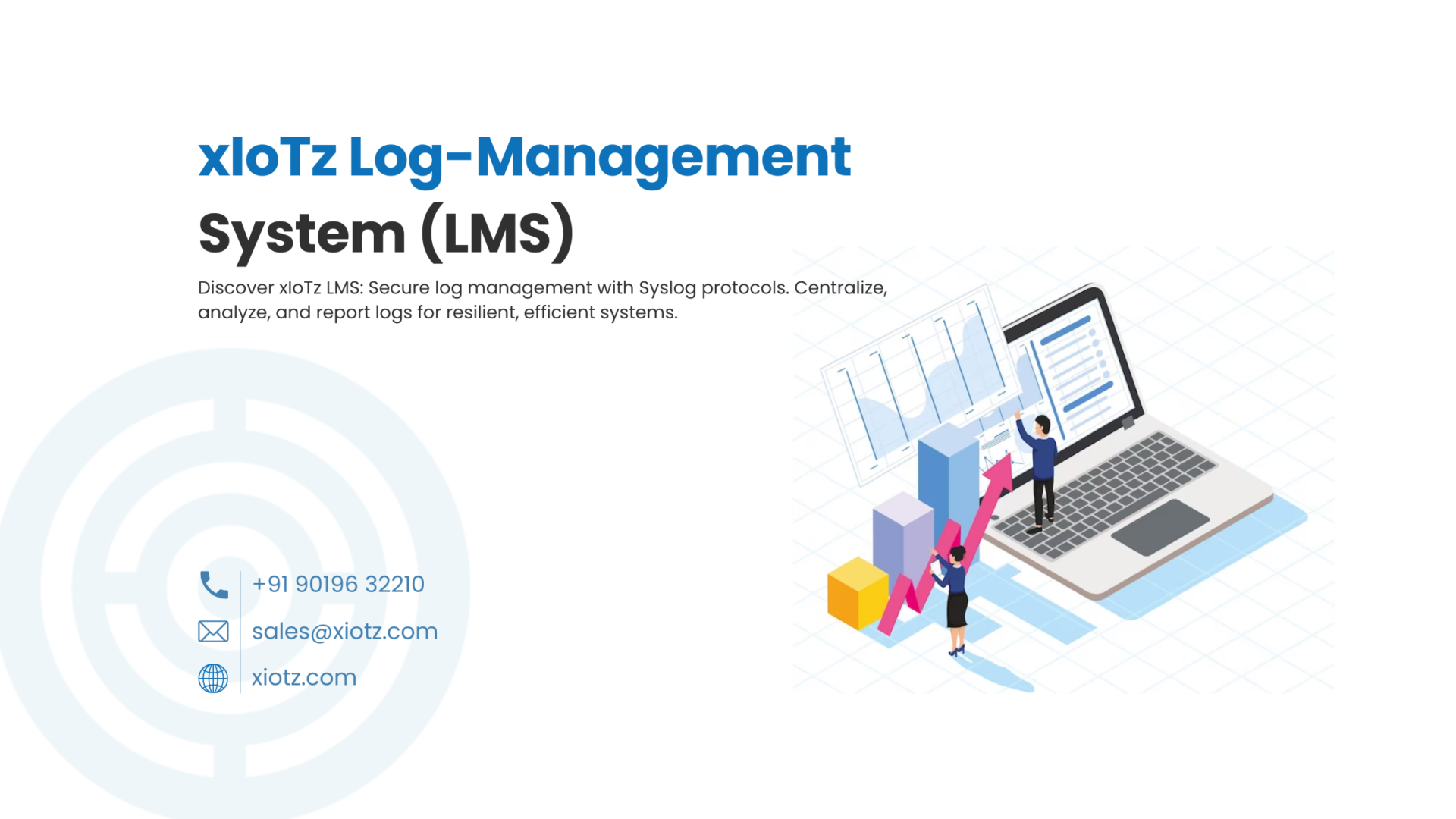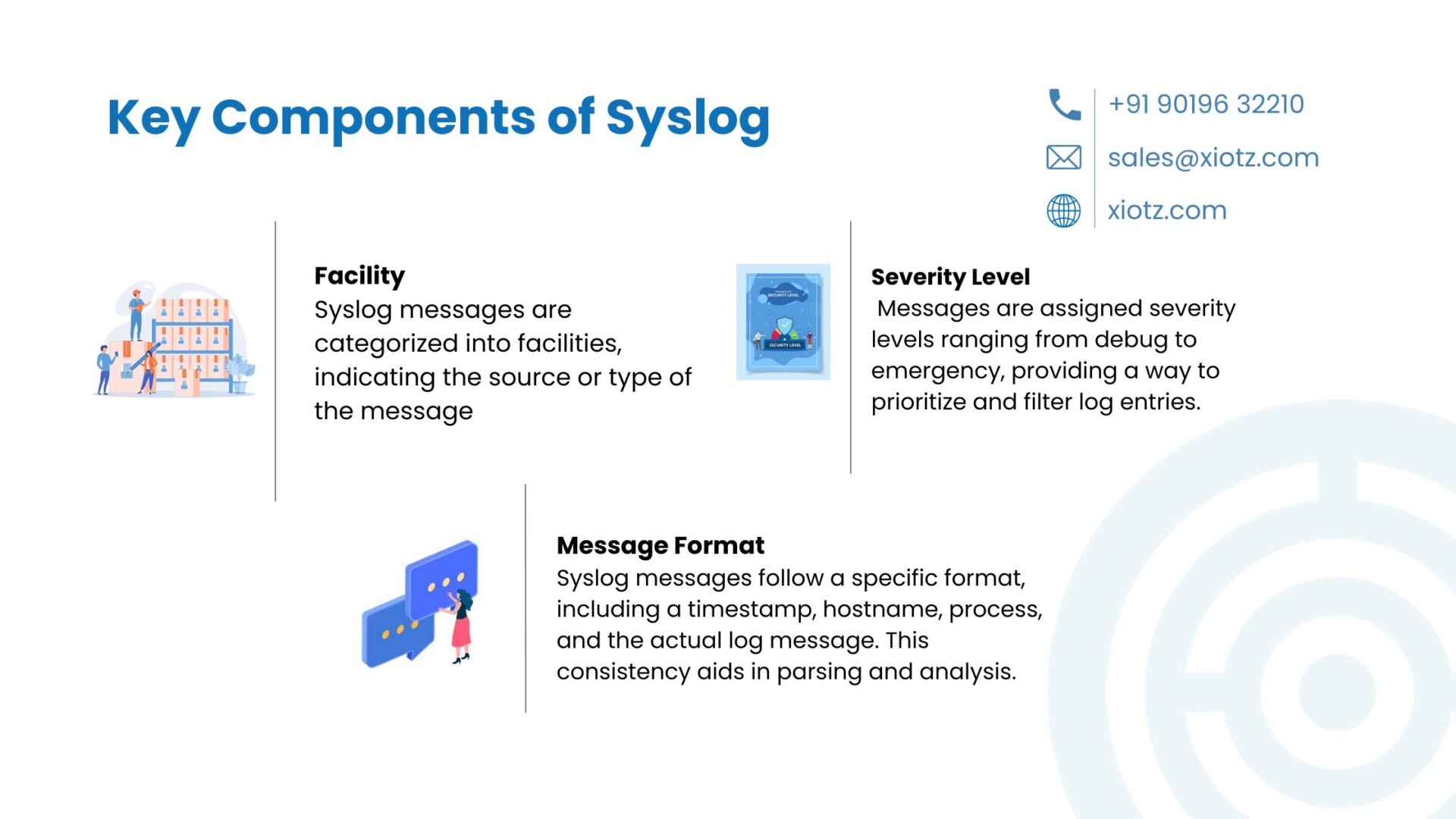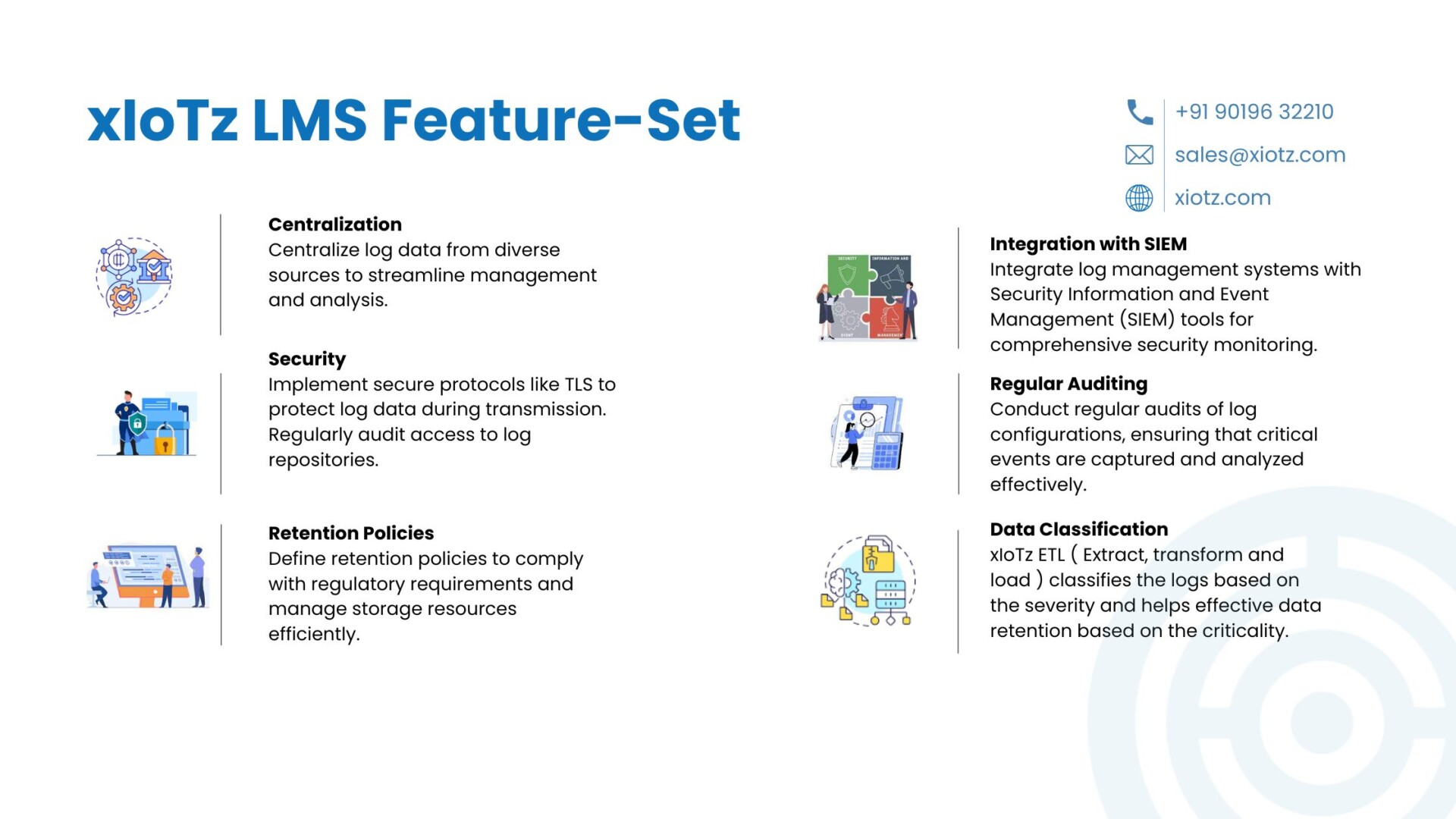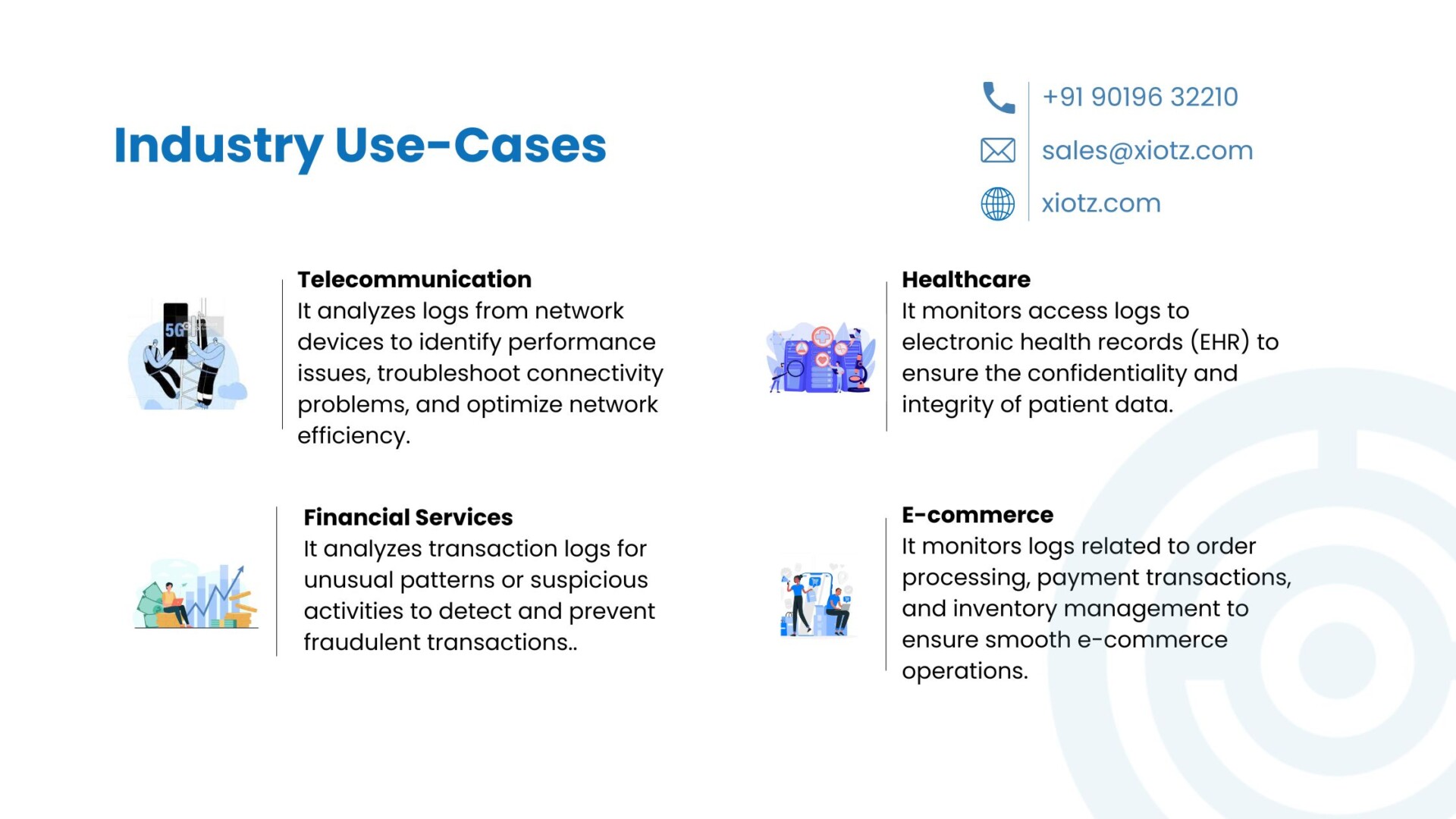Table of Contents
xIoTz Log-Management System (LMS)
Introduction:
In the vast landscape of IT infrastructure, particularly maintaining a secure and efficient system is paramount. One crucial aspect of this task is certainly the management of system logs. Logs, which significantly record events and activities within a system, play a pivotal role in troubleshooting, security monitoring, and performance optimization. In this blog post, we will explore log management systems, focusing on Syslog.
xIoTz Log Management System:
xIoTz Log Management Systems (LMS) are important tools that gather, store, analyze, and display log data. These systems help organizations understand the large amount of information created by their systems, applications, and network devices. The key objectives of log management include:
Centralized Log Collection:
xIoTz Centralize logs from various sources enables IT teams to have a evidently unified view of system activities. This facilitates easier troubleshooting, and thus enhances security monitoring.
Storage and Retention:
xIoTz LMS ( xIoTz Log-management systems) store logs in a structured manner, hence ensuring efficient retrieval when needed. Organizations certainly implement retention policies to comply with regulatory requirements and manage storage resources effectively.
Analysis and Reporting:
We analyze log data to identify patterns, anomalies, and potential security threats. Reporting tools help visualize trends, and thus making it easier for administrators to make informed decisions.
Alerting and Notification:
LMS can be configured particularly to trigger alerts based on predefined criteria. Thus, this proactive approach allows IT teams to address issues before they escalate.
Integrations:
xIoTz log management system generally integrates with various channels and tools for comprehensive monitoring, analysis, and response.
Email Alerts
Slack Integration
MS Teams channel
Google Chat and
Webhook Integration etc.
Syslog: A Protocol for Log Management:
Syslog is a standardized protocol used significantly for message logging. It is often used in Unix and similar systems, as well as in network devices such as routers, switches, and firewalls. The Syslog protocol particularly facilitates the transmission of log messages between devices over a network.
Log Management Components
- Log Collectors: Log collectors are particularly responsible for gathering log data from different sources within an IT infrastructure. These sources may include servers, network devices, applications, security appliances, and more.
Key Features:
- Agents: Log collectors may deploy agents on individual devices to capture and thus forward log data.
- Syslog and Event Forwarding: Support for standard protocols like Syslog or specific event forwarding mechanisms.
- Parsing: Ability to parse and significantly normalize log data for consistency.
2. Log Storage: Log storage means keeping log data safe and organized for later analysis, compliance, and forensic use.
Key Features:
- Scalability: The ability to scale storage capacity to accommodate the growing volume of log data.
- Data Retention Policies: Define policies for how long log data should be retained.
- Compression and Encryption: Techniques to compress and encrypt log data for efficiency and security.
3.Log Analyzers: Log analyzers process and analyze log data to identify patterns, anomalies, and security incidents. They play a crucial role in detecting and mitigating potential threats.
Key Features:
- Search and Query Capabilities: Powerful search and query tools to quickly retrieve specific log entries.
- Correlation: Ability especially to correlate events from different sources to provide a comprehensive view of incidents.
- Alerts and Notifications: Configurable alerts and notifications for specific events or patterns.
4.Reporting Tools: Reporting tools particularly generate human-readable reports based on the analyzed log data. These reports are essential for compliance, auditing, and decision-making.
Key Features:
- Customizable Dashboards: Create dashboards to visualize key performance indicators and significantly trends.
- Scheduled Reports: Automate the generation and distribution of reports on a scheduled basis.
- Compliance Reporting: Support for generating reports that comply with industry regulations and standards.
Key Components of Syslog:
Facility:
Syslog classifies messages into facilities, and thus indicating the source or type of the message.
Severity Level:
The system organizes messages by importance levels like debug or emergency to better manage and sort log entries.
Message Format:
Syslog messages follow a specific format, including a timestamp, hostname, process, and the actual log message. This consistency aids in parsing and analysis.
xIoTz LMS Feature-Set:
Centralization:
Centralize log data from diverse sources to streamline management and analysis.
Security:
Implement secure protocols like TLS to protect log data during transmission. Regularly audit access to log repositories.
Retention Policies:
Define retention policies to comply with regulatory requirements and manage particularly storage resources efficiently.
Integration with SIEM:
Integrate log management systems with Security Information and Event Management (SIEM) tools for comprehensive security monitoring.
Regular Auditing:
Regularly audit log configurations to ensure that you capture and analyze critical events effectively.
Data Classification:
xIoTz ETL categorizes logs by severity and aids in efficient data storage based on importance.
Industry Use-Cases:
- Financial Services: Particularly used for Fraud Detection. It analyzes transaction logs for unusual patterns or suspicious activities to detect and prevent fraudulent transactions.
- Healthcare: It is specifically used for Patient Data Security. It monitors access logs to electronic health records (EHR) to ensure the confidentiality and integrity of patient data.
- E-commerce: It is significantly used for Order Processing and Fulfillment. It monitors logs related to order processing, payment transactions, and inventory management to ensure smooth e-commerce operations.
- Telecommunications: It is particularly used for Network Performance Monitoring. It analyzes logs from network devices to identify performance issues, troubleshoot connectivity problems, and optimize network efficiency.
Conclusion and Takeaways:
xIoTz LMS is an easy-to-use tool that offers a good return on investment. It follows industry best practices to ensure business continuity for enterprises.
- Implement certainly best practices for cyber-resilient and secure systems.
- Leverage xIoTz LMS significantly for efficient log management.
- Ensure evidently effective log collection and storage.
- Utilize particularly advanced log analyzing capabilities.
- Generate comprehensive reports for enhanced system monitoring.
Related Terms:
Related Blogs:
Network Intrusion detection system
Reference Links:
Business Continuity Management



